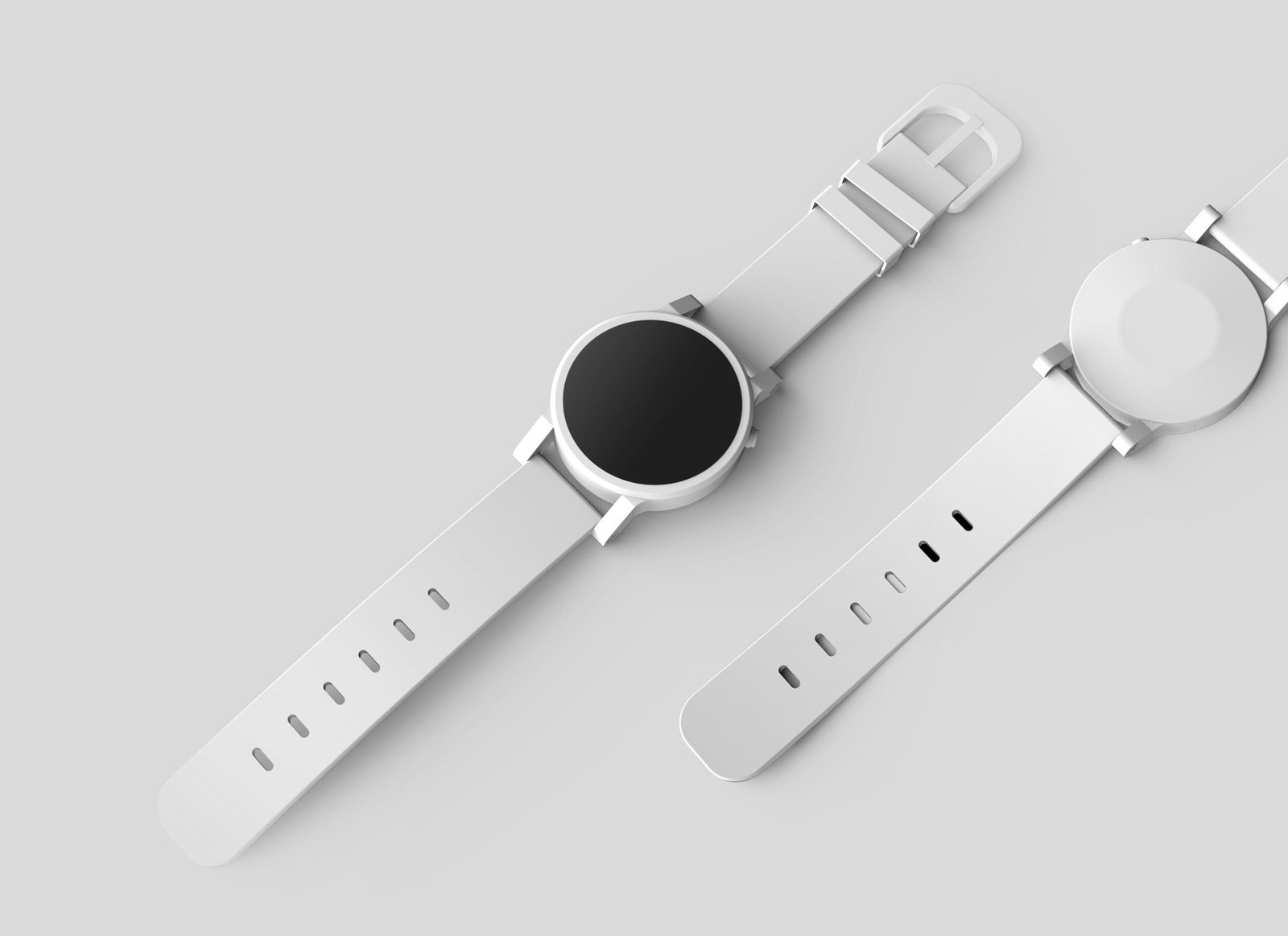Strategies for Idea Generation
Importance of Idea Generation
Where it all kicks off in the product world! You’ve got your brainstorming hats on and you’re ready to churn out novel ideas. This isn’t just about scribbling random thoughts on a whiteboard but pulling those big ideas from solid market research and what your customers are secretly wishing for. According to Qualtrics, you’re looking at a double-pronged approach: whipping up ideas while also giving existing products a good look-over to make sure everything stays relevant and spot-on.
But why stop at spinning ideas out of thin air? When companies truly tap into the bunch of insights hanging around both in-house and out in the wild, they pump up their innovation game big time. With a plan in place, breaking through those innovation barriers becomes a piece of cake and it keeps everything snug with the company’s big-picture goals.
Cross-Functional Collaboration
When everyone’s voice is part of the mix, that’s when the real magic happens. Cross-functional teams, with folks from marketing, design, engineering—you name it—each bring a different flavor that spices up idea generation. Research indicates that these killer combos are 70% more likely to open up new markets, proving how different angles can lead to smashing business wins (Vorecol).
These dynamic teams don’t just have good chats; they swap knowledge like nobody’s business, making sure no piece of the puzzle gets left behind. This kind of mix-and-mingle effort not only sparks fresh ideas but boosts team spirit—everyone feels a bit more badass because they helped make something awesome.
Throw in some “blue sky thinking” to get folks tossing ideas around without any “but-that-won’t-work” vibes creeping in, and suddenly you’re in the zone for converting those dreams into realistic strategies that fit like a glove with your product goals (Notion). Curious for more on upping your product’s game? Dive into our guides on new product development strategies and customer-centric product development. So, ready to get cracking?
Benefits of Cross-Functional Teams
Cross-functional teams are about getting folks from different departments to work together. This doesn’t just improve teamwork, it also sparks the kind of creativity that can really shake things up. Putting this idea into practice can give your company a leg up with increased efficiency, nimbleness, and a more engaged workforce.
Efficiency and Innovation
Cross-department teamwork doesn’t just help ideas flow like a river; it’s a powerhouse for getting things done. Studies show that companies focusing on this idea might be five times as likely to make big, fancy breakthroughs. About 78% of major tech breakthroughs even use such teams, thanks to the mix of different ideas making the magic happen!
Business Agility and Employee Engagement
When a company embraces a teamwork culture, they see cool stuff like a 20% jump in getting stuff done. This means they’re faster and more on the ball with market changes and what customers want. Plus, when people from different areas team up, it makes them feel involved and excited about strategic plans and product building. Big names like Apple, Nokia, and Cisco prove that mixing up teams leads to better thinking, slicker communication, and stronger team skills.
| Benefit | Impact |
|---|---|
| Increased Innovation | 5x more likely to hit the jackpot with new ideas |
| Improved Productivity | Guess what? A 20% spike in efficient workplaces |
| Enhanced Employee Engagement | Get better insights and chat like pros |
Bringing cross-department action into how you build products doesn’t just push for fresh ideas, it helps you keep pace with the constantly changing market. Wanna take it up a notch? Check out our product development frameworks and new product development strategies that focus on thinking outside the box and teamwork!
Role of Market Research
Market research is like your trusty compass for product development. By diving into what the market’s buzzing about and getting inside your customers’ heads, you can spark awesome ideas and boost how well your products do out there.
Customer-Centric Approach
Putting customers first is the name of the game if you’re wanting to stay relevant. Businesses that nail this mindset tend to rake in more dough—about 60% more profitable according to Cint. Here’s where you strap on your detective cap and start gathering intel about what makes your audience tick—their likes, habits, and what gets under their skin.
With solid market research, you can:
- Figure out what your customers dig
- See what makes them open their wallets
- Address the stuff that bugs them
Getting a handle on all this means you’ll talk to your audience in ways that hit home. You’ll use the right marketing mix and craft content that speaks their language. This cozy relationship builds brand loyalty and amps up user engagement, which eventually translates into increased sales and customer smiles.
Identifying Opportunities for Growth
Seeing the bigger picture is where market research shines. It cuts down the guesswork when launching new products, letting you gauge interest before diving headfirst into huge investments. Nobody wants a new product gathering dust on the shelves, right? Research shows a lot can go wrong—60% of new products flop, according to Cint.
By diving deep into research, you can:
- Test if your product ideas hold water
- Gauge interest and demand
- Spot rising trends in the market
Listening to what folks have to say can help you tweak or completely rethink your products to match what the market wants. This way, when it’s launch time, you’re not just betting the farm on a hunch.
Nail market research and it’s your secret weapon in product development. It drives your whole product marketing plan. Keeping an ear to the ground and adjusting to customer vibes is key to keeping your strategy fresh and your business thriving.
Idea Generation Process
Kicking around ideas is super important when it comes to getting that next big thing off the ground. Two go-to strategies you might wanna try are SCAMPER and SWOT analysis, each giving you a handy framework to get those creative juices flowing.
SCAMPER Model
The SCAMPER model’s like a treasure map for tweaking and revamping existing stuff. Each letter stands for a different way to think about what you’re working on:
- Substitute: Can you swap out some bits and pieces?
- Combine: What magic happens when two good ideas join forces?
- Adapt: Got any fresh twists to keep it trendy?
- Modify: Time to shake up the look, feel, or vibe!
- Put to Another Use: Can you flip the script and find a new role?
- Eliminate: Cut the clutter—what can go?
- Reverse: Flip it, reverse it. What changes if we rearrange this puzzle?
Teams use this to keep things fresh, making sure what they’re offering jives with what’s hot today Notion, Railsware.
Here’s how you might size up using SCAMPER:
| SCAMPER Move | What’s the Big Idea? |
|---|---|
| Substitute | Swap parts out like they’re spare Legos |
| Combine | Bring different flavors into one cool mix |
| Adapt | Spin it fresh for the times |
| Modify | Tweak the bells and whistles |
| Another Use | Find a new gig for an old hit |
| Eliminate | Trim it down to essentials |
| Reverse | Mix up the steps and see what unravels |
Use these like secret weapons to drum up ideas tailor-made for what’s hot right now.
SWOT Analysis
SWOT analysis is your Sherlock Holmes tool for cracking the case on what makes your product tick. It pushes you to dig into strengths, weaknesses, opportunities, and threats that touch on your gig.
| SWOT Piece | Think About This |
|---|---|
| Strengths | What’s your ace in the hole? |
| Weaknesses | Where do you trip up? |
| Opportunities | What cool stuff out there can you jump on? |
| Threats | What’s lurking that might rain on your parade? |
By being all detective-like, you can spin ideas that play to your strengths, shore up the weak spots, nab market opening, and dodge potential curveballs. Pairing this method with SCAMPER gives you a killer combo for crafting smart, forward-thinking product strategies that push your new product development strategies and beef up your product portfolio development.
Both techniques are key in the cooking up new ideas stage, helping you whip up strategies that are not just slick but also align with market moves. For more deep-dives into the product development life cycle, check out our other reads on the topic.
Effective Idea Generation Techniques
Cracking the code in product development starts with knowing how to fire up that idea engine. Let’s dive into two game-changers: Blue Sky Thinking and Documenting Ideas.
Blue Sky Thinking
Think blue sky, think no limits. This method, often called brainstorming, is all about letting creativity loose. Everyone on the team gets a shot to throw their wildest ideas into the mix. Forget about whether these ideas are workable or sensible at this point. The aim? More is better. This blur of thoughts may just lead to the next big thing waiting to be explored and polished into something amazing that fits snugly with your product goals (Notion).
| Key Things You Need to Know | What’s It All About? |
|---|---|
| Freeing Up Creativity | Letting the imagination run wild sparks fresh ideas. |
| Mix of Minds | Bringing in various viewpoints enriches the idea stew. |
| Focus on Loads of Ideas | More ideas boost the odds of hitting that jackpot of innovation. |
Documenting Ideas
Getting your ideas down pat is just as crucial. Nail down the problem or opportunity right from the get-go, round up the right mix of folks for diverse input, and have a solid plan for sorting and improving every new thought. A structured approach to jotting down ideas makes it easier to turn them into reality. Tools like Notion’s idea-to-execution template can have your back, shepherding bright ideas from birth to life (Notion).
| Steps to Nail It Down | What’s Involved? |
|---|---|
| Pin Down the Challenge | Spell out the problem or opportunity clearly. |
| Gather Different Voices | A mix of skills and views offers broader insights. |
| Make a Plan | Set out how to weigh and sharpen ideas. |
Using tricks like Blue Sky Thinking alongside smart documentation helps juice up your creativity process, leading to breakthroughs in your product creation path. For more wisdom, dig into related stuff like the product development life cycle and new product development strategies.
Structured Idea Generation Sessions
When it comes to cooking up those groundbreaking ideas, structured idea generation sessions are your ticket to hitting the jackpot. They offer a more organized path to product ideation, leaving spontaneous brainstorming in the dust.
Tools for Lighting the Creative Fire
Arming yourself with the right gadgets and gizmos during these sessions can spice up the creativity and keep you on track. Two familiar methods that pack a punch are SCAMPER and SWOT analysis.
- SCAMPER Technique: This nifty approach encourages teams to give a fun twist to existing ideas using seven actions:
- Substitute: Swap out parts to make something fresh.
- Combine: Mix and match different ideas for a new concoction.
- Adapt: Tweak things to fit new needs.
- Modify: Jazz up what’s already there.
- Put to Another Use: Find new ways to use old stuff.
- Eliminate: Trim the fat to make things sleeker.
- Reverse: Flip it all on its head for something unique.
Using SCAMPER, you and your crew can unearth new paths for reinvention. Check out ways to kick-start your creativity, Notion.
- SWOT Analysis: This one’s all about digging into the good, the bad, the possible, and the risky. Figuring out a product’s Strengths, Weaknesses, Opportunities, and Threats helps separate the cream from the crop. For a closer look at making smart moves and examining the playing field, Railsware.
| Tool | Purpose |
|---|---|
| SCAMPER | Sprucing up ideas/services/products |
| SWOT | Weighing up strengths and weaknesses; spotting opportunities and threats |
BRIDGeS Framework
The BRIDGeS framework is your ace in the hole for stirring up creative juices in your sessions. Here’s what it stands for:
- Brainstorming: Let those ideas flow freely, no judgments.
- Review: Put those ideas under the microscope to see what works.
- Investigate: Scratch beneath the surface to understand the ideas better.
- Develop: Formulate detailed plans for the real gems.
- Go Forward: Roll up your sleeves and bring those ideas to life.
- Sustain: Keep the momentum going with some fine-tuning for lasting success.
Mix the BRIDGeS framework in with your other tactics, and you’ll create a buzzing hive of idea creation. Give your team an assortment of tools and encourage each person to chip in. This team effort not only paves the way for nifty products but beefs up your whole product development process in marketing.
Product Development Strategy
Integration with Corporate Strategy
Developing new products? It ain’t just a separate gig; it’s got to play nice with your big-picture business plan. Your strategy should lay out goals that make sense and decisions about who gets the bucks this time. The idea is to give you an edge where it counts, like bumping up those sales numbers and profits (TCGen).
To pull this off, make sure your ideas for new stuff line up with what the whole company’s about. This not only cuts out any double-ups in work but makes sure resources go where they need to. When you’re all on the same page, you make more bang from every new product you’re hustling or beefing up.
Budget Allocation for Product Development
When it comes to budgets, it’s all about spreading that cash wisely, thinking about the risk each product brings to the table. How much you toss into each product pot can look real different depending on what kinda game plan you’ve got. Most folks go with these budget splits based on how risky the product is:
| Product Category | Cash Share |
|---|---|
| Your Regulars (Core Stuff) | 70% |
| Close to Home (Adjacent) | 20% |
| Out There (Transformational) | 10% |
Companies set in their ways usually play it safe and keep their product investments on the low-risk side (TCGen). But tech folks — especially those deep in software — might see costs shoot up, with research and development chewing through 10-25% of their sales (TCGen). Splashing that cash is about getting the design, engineering, and testing spot on so the shiny new products hit the shelves without a hitch.
Getting the budget right means walking the line between sticking with stuff you know will bring home the bacon and gambling a bit on products that might hit big, even if they come with more headaches.
For a deeper dive into how to glide through developing new products, check out our pieces on product development life cycle and new product development strategies. Following this roadmap not only sharpens up your development routine but also sets you up for steady growth in your biz.
Importance of Cross-Functional Collaboration
Getting different folks from across your organization to work together can really pump up how you come up with new ideas for making products. When you mix it up with teams from various parts of your company, you open the door to fresh insights and skills, leading to new and better ways to get things done.
Breakthrough Innovations
If your company is big on teamwork across departments, you are 5 times more likely to hit it big with game-changing innovations. Mixing different skill sets and backgrounds gets folks thinking outside the box and makes it easier to handle tough problems.
| Innovation Perk | Effect |
|---|---|
| More Teamwork | 5x more likely to innovate |
| Different Views | Sparks unique solutions |
| Team Vibes | Boosts creativity |
Teams with folks from multiple backgrounds are also 70% more likely to tap into new markets. This mix doesn’t just help with coming up with ideas but also beefs up how well your company rolls with the punches of changing market needs.
Impact on Productivity
Teamwork really clocks up productivity. As per the Boston Consulting Group (BCG), super collaborative companies see a 20% jump in productivity, letting them tackle market changes and customer wants lickety-split.
| Productivity Perk | Effect |
|---|---|
| Teamwork Setup | 20% productivity boost |
| Quick Market Moves | Faster change adaptation |
| Overall Smooth Sailing | Better workflow |
Plus, businesses where collaboration is a big deal have 5 times higher chances of being seen as innovative by their peers. This rep for being forward-thinking can boost your company’s image, opening up even more doors.
By getting cross-functional collaboration into your approach for coming up with product ideas, you can spark killer innovations and up your productivity game, setting the stage for long-term success.





















